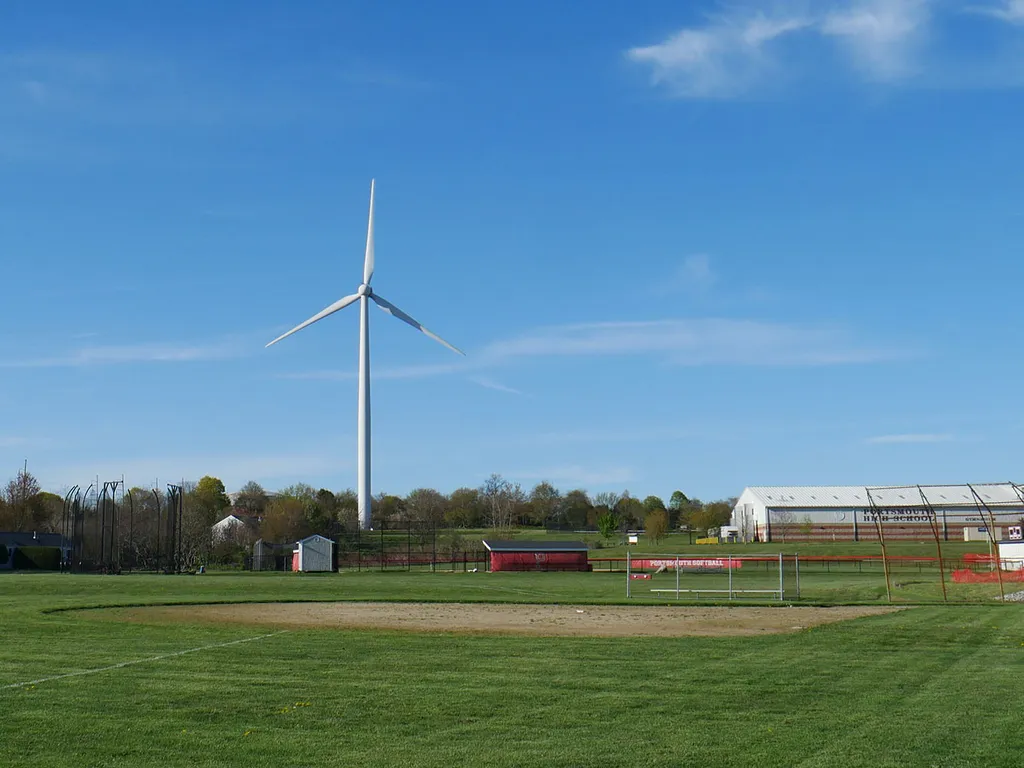In the heart of Tikrit, Iraq, a small but mighty innovation is making waves in the renewable energy sector. Hanaa E. Jasim, a researcher affiliated with an undisclosed institution, has designed and constructed a portable vertical axis wind turbine (VAWT) generator that promises to bring affordable, clean energy to rural and remote areas. The research, published in the *Journal of Pure Science (Tikrit)*, offers a glimpse into the future of decentralized, sustainable energy solutions.
The problem is clear: Iraq faces significant challenges in meeting its electricity demand. High consumption, limited power station capacity, and soaring bills—especially in rural areas—have led to a desperate search for alternative energy sources. Jasim’s work addresses these issues head-on. “The increase in pollution due to fossil fuels and the high cost of electricity have pushed us to explore renewable energy options,” Jasim explains. “Our goal was to design a wind turbine that operates efficiently at low wind speeds, making it suitable for regions with modest wind resources.”
The turbine, with a swept area of just 0.49 square meters, is designed to be compact and portable. Placed at least 8 meters above the ground to avoid disturbances, it starts rotating at a wind speed of just 1.5 meters per second—a significant achievement given the low wind speeds common in many parts of Iraq. At a wind speed of 6.6 meters per second, the turbine reaches its optimal performance, producing 75 watts of power. This energy is sufficient to charge a single battery, thanks to a multipurpose generator equipped with neodymium magnets, which operate efficiently even at low speeds.
The implications for the energy sector are substantial. Vertical axis wind turbines, unlike their horizontal counterparts, are less sensitive to wind direction, making them ideal for urban and rural settings where wind patterns are unpredictable. Jasim’s design could pave the way for decentralized energy systems, reducing reliance on centralized power stations and lowering electricity costs for remote communities. “This technology has the potential to revolutionize energy access in areas where grid connectivity is limited or non-existent,” Jasim notes.
The commercial impact of this research could be profound. As governments and businesses worldwide seek to reduce carbon emissions and transition to renewable energy, portable and efficient wind turbines like Jasim’s could become a cornerstone of sustainable energy strategies. The design’s simplicity and affordability make it an attractive option for both developed and developing nations, offering a scalable solution to energy poverty and environmental degradation.
Looking ahead, Jasim’s work sets the stage for further innovation in the field of wind energy. Researchers and engineers may build upon this design, exploring ways to enhance efficiency, reduce costs, and integrate these turbines into smart grid systems. The potential for collaboration between academia, industry, and policymakers is immense, with the shared goal of creating a more sustainable and equitable energy future.
In a world grappling with climate change and energy insecurity, Jasim’s research offers a beacon of hope. It reminds us that even in the most challenging environments, ingenuity and determination can drive progress. As the energy sector continues to evolve, the lessons learned from this small but powerful turbine could illuminate the path forward, shaping the future of renewable energy for generations to come.

